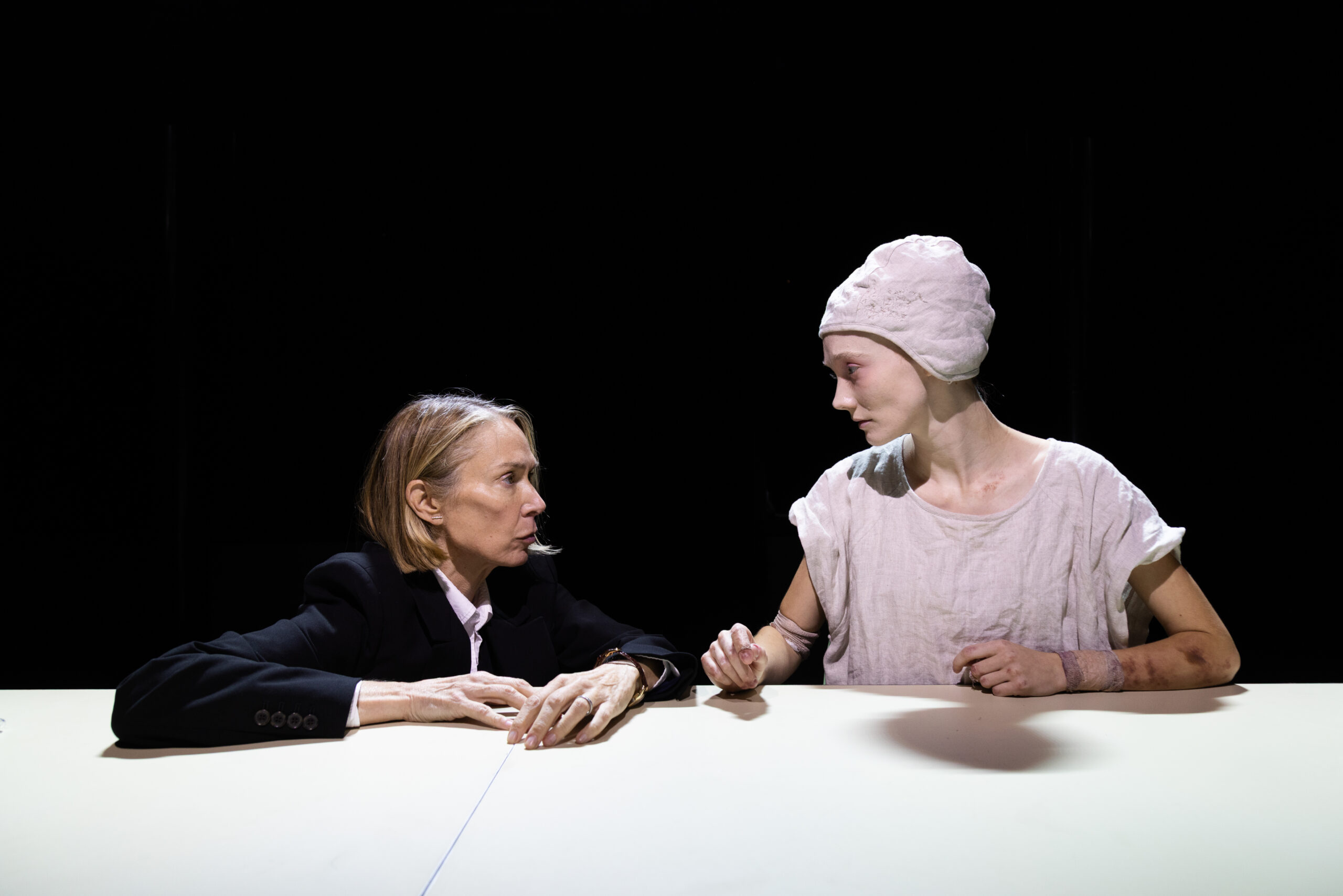
“And Then We Were No More” at La MaMa (Photo: Bronwen Sharp)
Mercy, remorse, and forgiveness are in danger of becoming forgotten in Tim Blake Nelson’s new play And Then We Were No More. In this unnamed, near-future dystopia, crime has been almost entirely eliminated. When the rare murderer must be represented, a lawyer is summoned to determine whether she is to be executed in a patented, painless manner. With some searing performances and, perhaps, disturbing prescience, the audience is left considering what moral fiber it stands for and if it will endure.
The central character is identified only as A Lawyer and is flawlessly played by Elizabeth Marvel. She is bemused as to why she has been called into “the complex” which we slowly gather is a prison of sorts where criminals are brought to be executed albeit with a supposedly pain-free method. Representing the “machine” which is both the actual execution apparatus and perhaps the ruling regime is An Official (an avuncular Scott Shepherd). He grinningly grills the lawyer, apparently to gauge her suitability for defending a woman who has poisoned her two children, husband, and mother. It transpires that the lawyer has no choice, despite her obvious skepticism that the murderer will be given a fair hearing.
This all takes place on a stark set with moving glass panels and sinister orange ducts snaking up pillars. David Meyer’s design suggests a vast structure that we learn can be seen from anywhere in the city. Various machines are intriguingly low-tech, with clunky buttons and wiring. Sound effects (by Henry Nelson and Will Curry) add to the sinister and oppressive ambiance with deep bass mechanical hums and grinding noises. In one of the humorous moments of this mostly dark play, we are treated to jaunty “hold” music as the lawyer waits to meet her plaintiff.
Here the writing takes a turn from slightly over-formal discourse to staccato word soup as the lawyer interviews The Inmate (Elizabeth Yeoman). Dressed in what looks more like a medieval uniform than a futuristic one (costumes are by Marina Draghici), Yeoman is heartbreaking as she haltingly explains her plight. The lawyer helps interpret her plea for help, learning that she has been in solitary confinement and brutally abused in the name of medical treatment. It becomes clear that she does not want to be executed as the system has asserted.
The proceedings are also being observed by An Analyst (Jennifer Mogbock) who is marketing the execution method around the world now that criminals are practically unknown at home. Mogbock is convincing as a career company woman who appears to have no qualms about her trade. Henry Stram makes an appearance as the ultimate executioner, The Machinist, channeling the sangfroid of the architects of the Final Solution.
The first act culminates in a trial with a pre-ordained verdict and the dismissal of mercy, forgiveness, and remorse. Some in the audience were convinced it was the end of the play. And it could have been. But a second act takes us to a year later when our main protagonists reflect on the consequences of their actions. A vantage point over the city is suggested in a puzzling choice of risers edged with colored tape – the one design misstep in the play.
An unexpected turn ensues that is open to interpretation. Based on the first act alone, the play seems to be a warning about the dangers of “a system that dispenses with uncertainty” and in which the “inconvenience of deliberation is removed.” It’s a reminder to protect our natural instincts and keep asking questions however difficult the answers may be.
